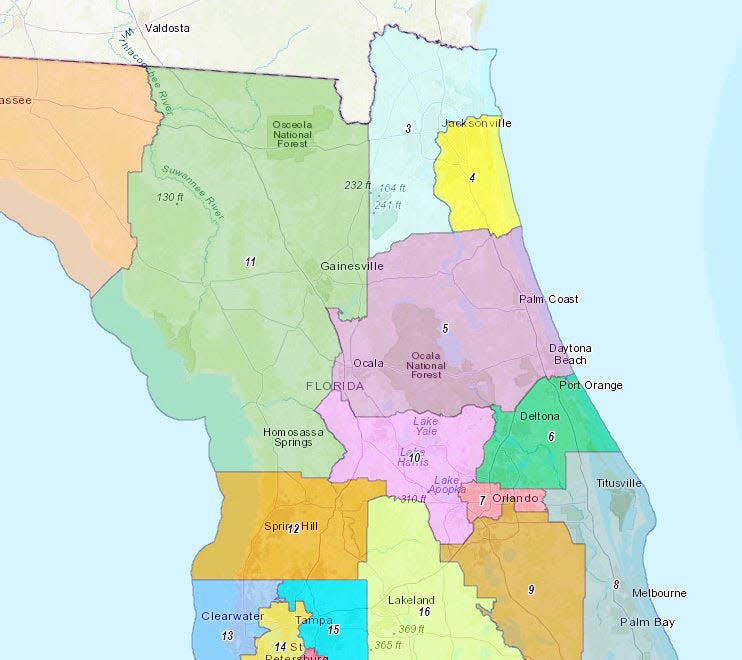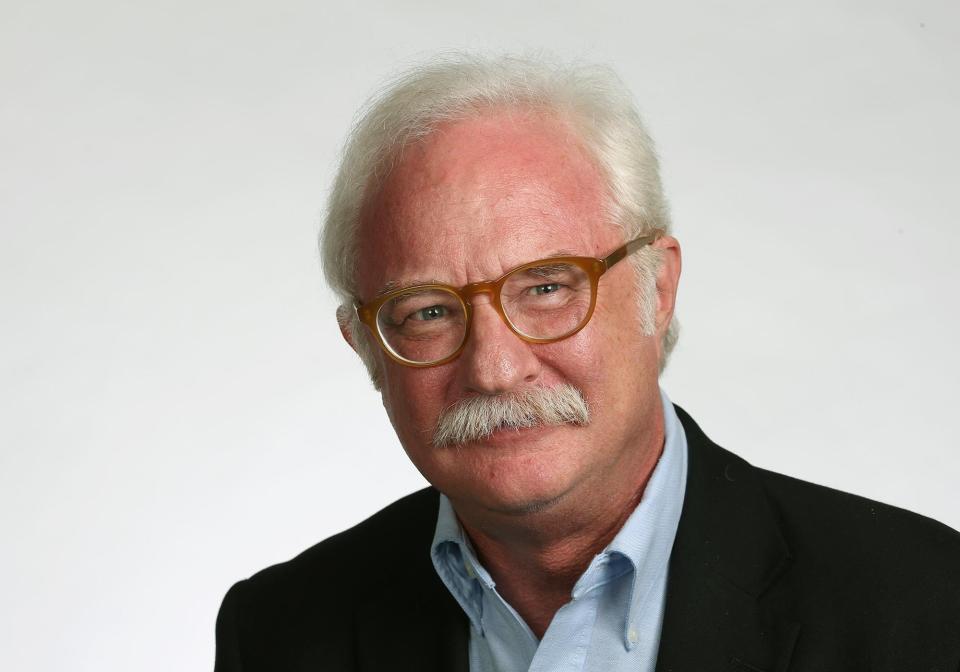Mark Lane: Gov. Ron DeSantis remaps Florida Legislature's remapping process
- Oops!Something went wrong.Please try again later.
- Oops!Something went wrong.Please try again later.
Gov. Ron DeSantis has jumped into Florida’s redistricting process — something that’s normally a legislative task.
The governor offered a Congressional map that would rearrange a North Florida district now held by U.S. Rep. Al Lawson, D-Tallahassee; break up the southeast Florida district that had been held by the late Rep. Alcee Hastings, D-Miami, and do major surgery on the St. Petersburg district now represented by Rep. Charlie Crist, D-St. Petersburg.
See a pattern here?
Mark Lane: Legislature moves closer to drawing the lines
More: Rep. Al Lawson blasts Gov. DeSantis' congressional redistricting map
Not so fast: Florida Senate breaks with Gov. Ron DeSantis on congressional redistricting map
This is a Legislature where few Republicans want to say no to the governor about much of anything. Plus, the governor has the power to veto any redistricting bill he doesn’t like. And that means this surprising announcement shifted the debate about remapping overnight.

The governor’s plan would slice Volusia County in two. This would mean that once again, as it usually has been, Volusia would likely be only a secondary concern for a representative who lives elsewhere. Daytona Beach would be grouped with bright red counties to the north and west; Port Orange would be grouped with Seminole County in District 7.
It’s a map that made at least one person happy. “A great NEW congressional map was just released tonight from Governor DeSantis’ office. District numbers all change under this proposal—I would be running in District 6 (which is District 7 with a new #),” wrote state Rep. Anthony Sabatini, R-Howey-in-the-Hills, in a Facebook post. Sabatini is the Legislature’s most aggressively right-wing member (“Conservative fighter” is his campaign slogan) and is currently on the outs with the legislative leadership of his own party.
BREAKING: A NEW Congressional map just released tonight from Governor DeSantis’ Office. District numbers all change under this proposal—I would be running in “District 6” (which is “District 7” with a new #)
Support my #AmericaFirst campaign here! 🇺🇸👇
https://t.co/c1JWTh0Y6b pic.twitter.com/kNKYiMShJd— Rep. Anthony Sabatini (@AnthonySabatini) January 17, 2022
The redistricting process takes place every 10 years to account for population shifts. Courts have required that all districts have roughly the same number of people. That way, everyone’s vote has the same political weight regardless of where they live. In Florida, a high-growth state that routinely sees big population shifts, this remapping exercise is particularly tricky work.
The round of redistricting that gave us our current boundaries took a long, hard path with plans bouncing between the Legislature and the courts with a fair amount of political skullduggery in the process. It took five years to finalize the lines. A two-week legislative special session on redistricting in 2015 ended without agreement between the House and Senate. A judge then looked at the different versions the House and Senate approved, noted that they both kind of stunk, and came up with his own map.
In the redistricting session before that, legislators split Volusia County between two districts, and in the weirdly gerrymandered mapping exercise before that, three districts. In the past, we’ve been at the crossroads of gerrymandering.
Questions of gerrymandering

In the last census, Florida gained enough new people to get another seat in the U.S. House of Representatives. Twenty-eight in all. Currently, 16 Republicans and 11 Democrats represent Florida districts in the U.S. House of Representatives. The Florida Senate gave a nod to a map Thursday that would create 16 Republican-leaning congressional seats and 12 Democratic-leaning seats. DeSantis’ map, by contrast, draws districts that would favor Republican candidates in 18 districts and reduces Democratic-leaning districts to 10. It also takes aim at two districts that have elected Black representatives so that no district has a population of more than 40% Black people.
In all, a Republican shift that carries the distinct aroma of gerrymandering.
Gerrymandering, or drawing lines in distorted ways for political advantage, is discouraged under Florida’s fair redistricting amendments to the state constitution, enacted by voters in 2010. (Another amendment put on the ballot by referendum because the Legislature wouldn’t act.) Those amendments require districts to be compact and, if possible, respect political and geographical boundaries like county and city lines.
These reasonable requirements tied the process in knots 10 years ago. This time around, the state Senate is trying to be more careful about the process and the state House only a little less careful. And the governor is less careful still.
It’s still early in the 60-day session but DeSantis has clearly altered the cut of things. How much tailoring remains to be done after the governor put his pattern on the table remains to be seen. This session is shaping up as the most deferential to the governor’s office in years and it’s likely that deference extends to the remapping process.
Mark Lane is a News-Journal columnist. His email is mark.lane@news-jrnl.com.
This article originally appeared on The Daytona Beach News-Journal: Florida Governor Ron DeSantis remaps Legislature's redistricting process

